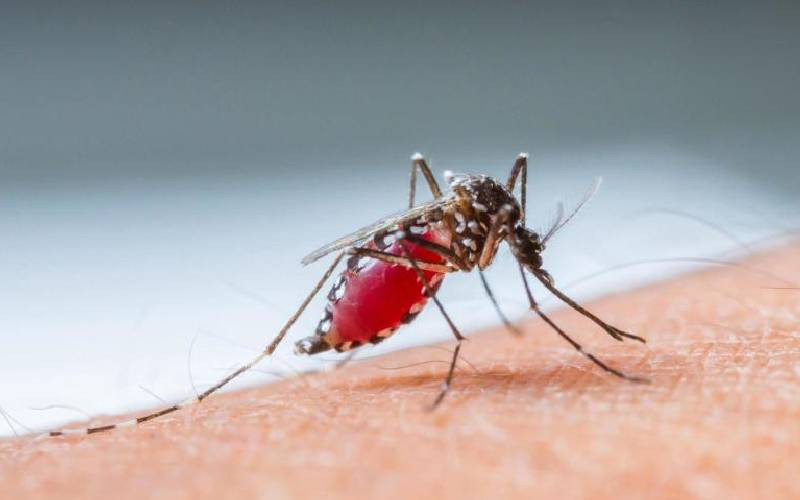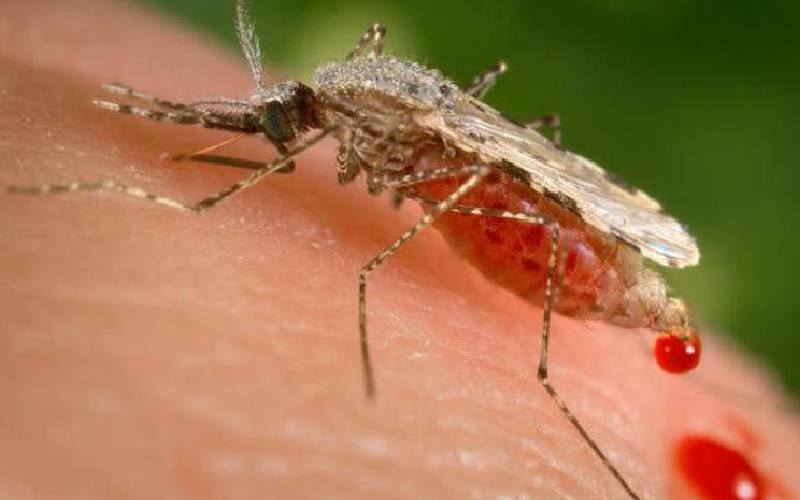By Stephen Biwott
Community Health Workers (CHWs) are playing a big role in reducing deaths from Malaria, which remains the leading cause of morbidity and mortality in Kenya The role played by Community Health Workers (CHWs) in reducing deaths from Malaria, a leading cause of morbidity and mortality in Kenya, cannot be ignored.
From Pokot to Katito in western Kenya, CHWs are the link between the community and the health facility. They follow up on treatment for patients, refer them to the health centre, and educate communities on prevention and control methods.
Take the case of Esther Napkai, a CHW in charge of about 15 homes in Pokot.
She confirms that the distribution of treated mosquito nets and constantly reminding her community of the importance of using the nets has seen malaria cases reduce by about 50 percent.
People can now save on money they previously spent buying medicines from private drug stores following shortages in government facilities.
It is not any different in Turkana. Priscilla Chiro, nurse-in-charge at the Catholic church run Lorugum health centre, affirmed that CHWs promotion of nets especially among the vulnerable populations — children under five years, and pregnant women — has seen malaria prevalence decline drastically. This has reduced the work load at the health facility.
Distant dream
In Katito, a high malaria endemic area, the story is similar. CHWs are on their feet preaching messages of using insecticide treated nets to reduce chances of mosquito bites, especially now that there is flooding due to heavy rains.
The CHWs approach may resonate with this year’s World Malaria Day theme Invest in the future: Defeat Malaria, but there are certain things that if not addressed, will make crushing malaria a distant dream.
This is in a country where 25 million out of a total of 34 million Kenyans are at a risk of malaria, according to the Kenya Medical Research Institute.
While steps have been taken to tackle the disease, concerns still remain over availability of and accessibility to essential malaria drugs, given the frequent drug stock outs in some public health facilities. The drug supply system is something that has to be sorted out so that patients can access medicines wherever and when they need them.
During a recent visit to a government health facility in Katito, the nursing officer regretted saying, “Sometimes we have testing equipment, but when we are unable to dispense medicines because they are not there, and we have to ask the poor person from the community with no cash to go and buy medicine from a private chemist, then that is a real challenge.”
The overarching goal of the National Malaria Strategy is to reduce morbidity and mortality and maintain the reduction to 2017. The question here is how will this will be possible when funding for malaria is donor sponsored?
Most of the monies to fight malaria are from the Global Fund to fight Aids, Tuberculosis and Malaria. As the Katito nurse rightly posed, what will the fate of patients be when these donors pull out?
Stay informed. Subscribe to our newsletter
Someone needs to think about increasing investment for malaria from within. What happened to the Abuja declaration of 2001 where African countries, Kenya included, committed to increasing their budgetary allocation to health to 15 per cent? Twelve years down the line Kenya’s allocation to health is at seven per cent.
There is broad partnership for scaling up of malaria control interventions involving government and non-governmental organisations like World Vision, which has been involved in mass distribution of mosquito nets in communities across the country. A lot more still needs to be done to ensure universal access defined as two nets per household.
This, combined with residual spraying and other efforts at individual level, such as timely testing and treatment when one feels exposed to malaria, and draining of stagnant water, will go a long way in eliminating malaria.

The writer is a sector specialist on malaria at World Vision Kenya.
 The Standard Group Plc is a
multi-media organization with investments in media platforms spanning newspaper
print operations, television, radio broadcasting, digital and online services. The
Standard Group is recognized as a leading multi-media house in Kenya with a key
influence in matters of national and international interest.
The Standard Group Plc is a
multi-media organization with investments in media platforms spanning newspaper
print operations, television, radio broadcasting, digital and online services. The
Standard Group is recognized as a leading multi-media house in Kenya with a key
influence in matters of national and international interest.
 The Standard Group Plc is a
multi-media organization with investments in media platforms spanning newspaper
print operations, television, radio broadcasting, digital and online services. The
Standard Group is recognized as a leading multi-media house in Kenya with a key
influence in matters of national and international interest.
The Standard Group Plc is a
multi-media organization with investments in media platforms spanning newspaper
print operations, television, radio broadcasting, digital and online services. The
Standard Group is recognized as a leading multi-media house in Kenya with a key
influence in matters of national and international interest.









